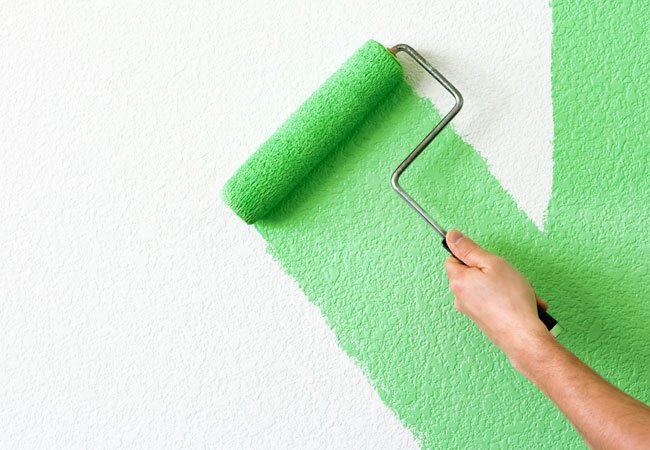How to Paint Your Bathroom: A Step-by-Step Guide

Painting a bathroom can be a fun and simple project that makes a big difference in the room’s appearance. Whether you want to brighten up the space, add some colour, or update old walls, a new coat of paint can help. This guide on how to paint a bathroom will show you each step, from picking the right paint and tools to getting the walls ready and putting on the finishing touches. You can make your bathroom look great with a little planning and effort. Let’s get started and see how you can transform your bathroom with just a few brush strokes.
What You’ll Need
- Paint: Choose a high-quality, mildew-resistant paint. Bathroom paints are often formulated to resist moisture and mould.
- Tools: Paint roller, 2-inch sash brush, paint tray, painter’s tape, drop cloths, and plastic sheeting to protect fixtures.
- Cleaning supplies: Mild cleaning solution, damp rags, or bleach (optional).
- Additional tools: Flathead and Phillips screwdrivers (to remove any fixtures) and a small roller (for tight spaces).
How to Paint a Bathroom
Step 1: Pick the Right Paint
Choosing the right paint is key to a successful bathroom makeover. Bathrooms are exposed to a lot of humidity and water, so you need paint that can withstand these conditions. Look for mildew-resistant paints designed for bathroom use. These paints will help protect your walls from mould and moisture over time.
- Finish options: For a sleek, easy-to-clean surface, go for a glossy or semi-gloss finish, especially around areas prone to water exposure, like near the shower.
- If you prefer a matte look, some high-quality bathroom paints offer a matte or eggshell finish, which provides durability without the shiny surface.
A higher-quality paint will have more solids, giving you a stronger, longer-lasting finish. This will also help the paint resist stains and moisture.
Step 2: Clean the Walls
Before you start painting, you must ensure the walls are clean. Over time, bathrooms can accumulate soap scum, mildew, and grime, which can prevent the paint from sticking properly.
To clean the walls, mix a solution of water and bleach (3 parts water to 1 part bleach) or use a mildew-fighting cleaner. Scrub the walls well, especially in moist areas around the shower and sink. Once cleaned, wipe the walls with a damp cloth and let them dry completely.
Step 3: Prepare the Bathroom
Preparation is crucial to making sure your paint job looks professional.
- Remove obstacles: Remove mirrors, towel racks, light fixtures, or outlet covers. This will give you clear access to the walls and prevent you from accidentally getting paint on them.
- Tape off edges: Use painter’s tape to protect areas you don’t want painted, like the ceiling, trim, and around the door.
- Cover the floor and fixtures: Lay down drop cloths or plastic sheeting to protect your floor, sink, toilet, and other items that might get splashed with paint.
Tip: One tricky spot is painting behind the toilet. You can use a small roller to get into that tight space or, if needed, carefully remove the toilet tank to access the wall behind it. Don’t worry — it’s easy to do! Just turn off the water supply, flush the toilet to empty the tank, and carefully remove it with some towels underneath to catch any water.
Step 4: Apply the Paint
Now, it’s time for the fun part: painting
- Cut in edges: Start by using your sash brush to paint along the edges, corners, and around trim or fixtures. This helps create clean, sharp lines.
- Roll on the paint: Once the edges are done, use a roller to cover the rest of the wall. Start at the top and work your way down. Apply the paint in a “W” pattern to spread evenly, then fill the blank areas with smooth, parallel strokes.
- If you’re using self-priming paint, you won’t need an additional primer. However, if your walls are dark or you’re painting over bare drywall, consider using a primer to ensure good coverage.
Step 5: Wait for the First Coat to Dry
Let the first coat of paint dry completely before adding a second coat. This typically takes about two hours, but it might take longer, depending on the temperature and humidity.
Once the first coat is dry, apply a second coat using the same process. This will give you a smoother, more durable finish.
Step 6: Clean Up and Touch Up
Once your final coat is dry, it’s time to clean up.
- Remove painter’s tape: Carefully peel off the painter’s tape to reveal crisp, clean lines.
- Clean up: Remove any plastic sheeting and drop cloths. Reinstall any fixtures or hardware you removed earlier, such as mirrors, towel racks, and light switches.
- Touch-ups: Keep some extra paint on hand in case you need to do any touch-ups around edges or areas that need a little extra coverage.
Additional Tips for a Perfect Finish
- Ventilation: Make sure the bathroom is well-ventilated while painting, especially if you use strong cleaners or paints. Open a window or use an exhaust fan.
- Humidity and Drying: The bathroom is a high-moisture area, so allow enough drying time between coats, especially in damp conditions.
- Touch-ups: Keep extra paint on hand if you need to do any touch-ups after the job.
Recommendation
What Type of Paint for Bathroom: A Complete Guide
What Is A Jack And Jill Bathroom?
How Often Should You Clean Your Bathroom?
How to Get Rid of Ants in Bathroom?
How To Remove Bathroom Sink Stoppers?
Why Does My Bathroom Smell Like Sewage?
Best Bathroom Cleaner For 2025
Best Bathroom Flooring Ideas for 2025
What is the Best Flooring for a Small Bathroom?
How to Decorate a Bathroom Shelve?
The Ultimate Guide to Keeping Your Glass Shower Doors Spotless
25+ Best Bathroom Door Ideas for an Elegant and Functional Space
How to Install Wallpaper in a Bathroom: A Comprehensive Guide
How To Replace A Shower Handle
Small Toilet Ideas – 50+ Best Toilet Designs
How to Install a Shower Drain?
Why Your Toilet Won’t Flush? Main Causes And Solutions
Final Thoughts
Painting your bathroom walls might seem like a big project, but you can achieve great results with the right preparation, tools, and patience. Whether you’re giving your bathroom a fresh coat of paint to brighten it up or completely changing the look with a bold new colour, a newly painted bathroom can make a huge difference. Enjoy the process, and soon, you’ll have a bathroom that feels like new again.
FAQs
Q: What paint can you use in a bathroom?
A: Acrylic Eggshell works well in kitchens and bathrooms. Satin paint has a slight shine and can be used in bathrooms with low moisture, but it isn’t great for very damp spaces. Semi-gloss or high-gloss paints are better for areas with more moisture.
Q: Do bathrooms need special paint?
A: You usually don’t need special mould- or mildew-resistant bathroom paint. Just make sure your bathroom has good ventilation. Modern paints like acrylic eggshell or satin finish work well for most bathrooms.
Q: Do I need a primer for bathroom paint?
A: Using a primer before painting your bathroom is a good idea. A primer helps the paint stick better to the walls and reduces the chance of peeling or moulding. Make sure the primer dries completely before adding your paint.
Q: What brand of paint is best for bathrooms?
A: It’s best to use durable matte paint like Crown Trade Clean Extreme Scrubbable Matt or Dulux Trade Diamond Matt for bathrooms. These paints are strong, easy to clean, and won’t get damaged or marked when wiped, keeping them looking great for a long time.






